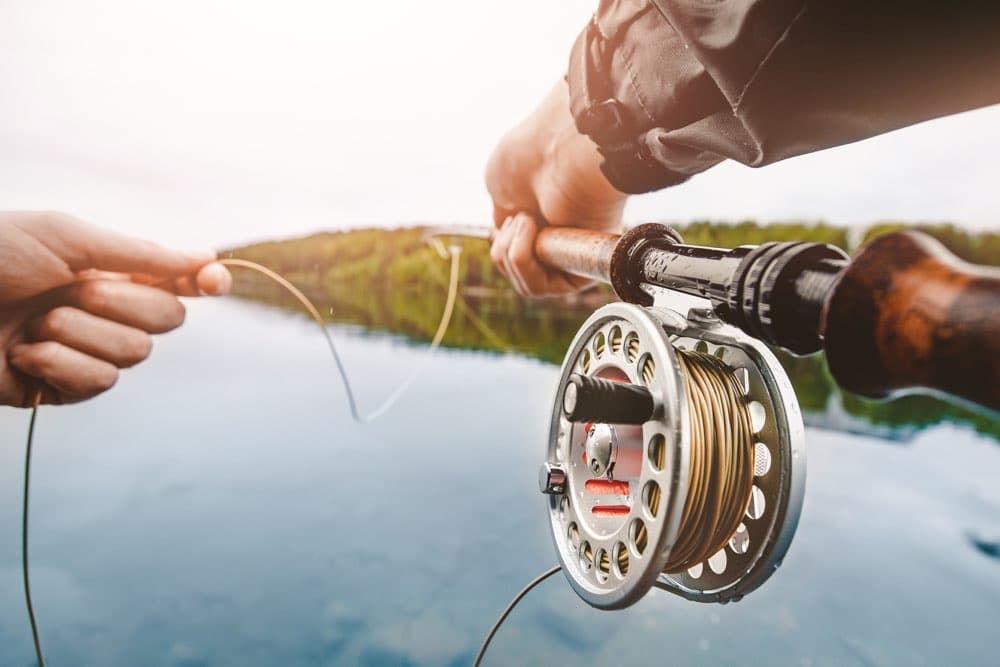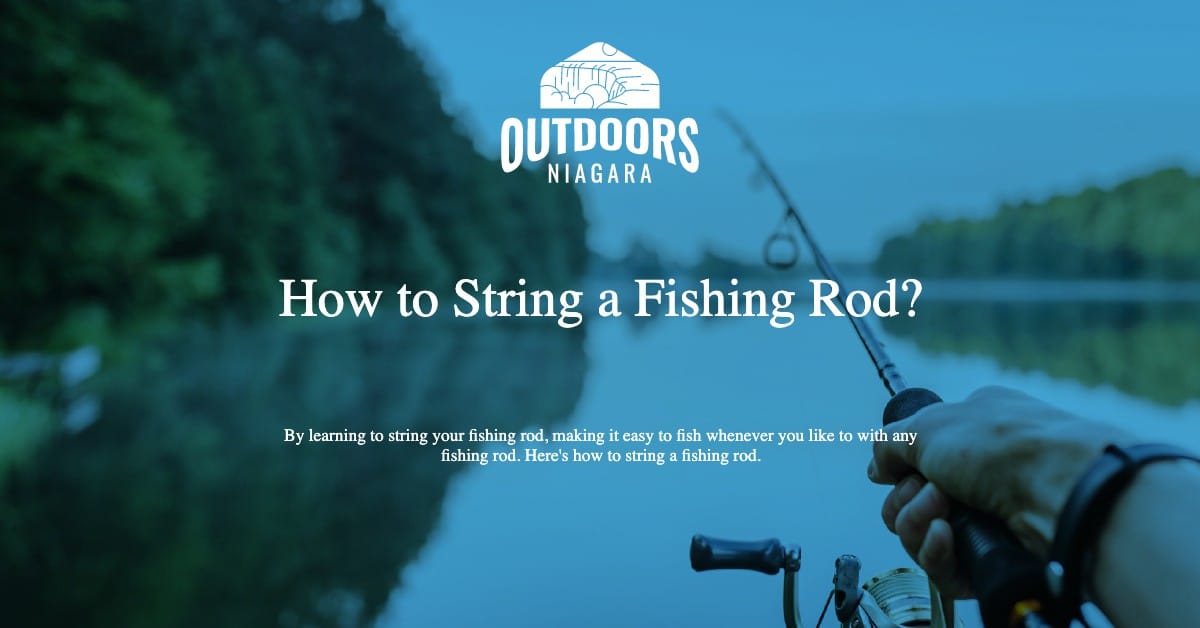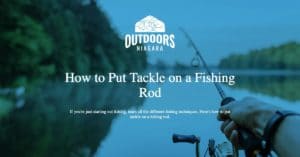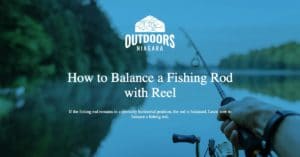Fishing is a popular hobby that people still enjoy today.
There are several kinds of fishing rods available and there’s bound to be one that is perfect for every fisherman.
Once you have your fishing rod, you are nearly ready to begin your fishing adventure.
The next step is to learn how to string your fishing rod.
Contents
How to String a Fishing Pole for Beginners
Now that you have your fishing rod, it is time to master the stringing process.
A good tip is to check your fishing rod’s line rating so that you can get the fishing line that is suitable for your rod.
The line rating refers to the weight of the line; for example, a rod with a line rating of between 6 and 10 pounds should use a line that is also 6 to 10 pounds.
Most lines are monofilament fishing lines, and you can find a great selection at your local fishing supply store.
Once you have the right lines, you will be happy to hear that stringing your fishing rod is a very straightforward process that doesn’t take a long time.
Just follow these steps for stringing your fishing rod.
- Place your fishing rod on a flat surface. A wire arm on your fishing reel can lift up and down, which is called a bail. Find the bail and the end tag of your line and begin to run it through the guide of your reel. Using an arbor knot, tie your line to the middle of your reel spool.
- Now you can pick your fishing pole up off of the floor and place your line spool on the floor. Be sure to remember your line spool so that the line feeds off in a counter-clockwise direction. It is essential to have some tension on your line. You can achieve this by holding the line between your fingers or pinching the line down on your fishing pole.
- Take your time as you continue to load the line until you have reached the edge of the line. It would be best if you kept about an eighth of the edge. Remove the line from the line spool by cutting it.
- You should open your fishing rod’s bail and then run the end of the tag through the guides that remain. It is always good to start on the closest end to your fishing rod’s handle. From there, you run the line towards the tip of your rod and end by leaving at least four feet of line that extends down the fishing rod’s end.
That is how you string your fishing rod.
Now all you need to do is tie a strong knot and you are ready to begin.
A noose knot is a good option to use here because it is easy to make and is strong.
There are dozens of knots that you can make when it comes to fishing.
Some are simple knots and they are fine to use in this case.
However, it is best to avoid a loose knot since they are the wrong knots for this purpose.

How to String a Closed Face Fishing Pole
Anglers are spoiled for choice these days with so many different kinds of spinning reels on the market.
The easiest of these to master and operate are closed face reels which are also called spincasting reels.
This is why these fishing poles are very popular amongst fishermen.
With a simple push of a button, you can cast your reel without running the risk of tangling your line or experiencing backlash.
Although most closed face reels will come already loaded with sufficient line for fishing, it is a handy skill for fishermen to know how to string their closed face fishing pole.
Here are the steps you need to take to string your closed face fishing pole.
- By holding your closed face reel’s cover steady, spin it. It is vital that you only turn it counter-clockwise. It would be best if you continued to turn it until you feel that it is possible to remove the cover. Then place your reel down on the floor.
- Next, attach your closed face reel to your fishing rod. Although most rods will work just fine with your closed face reel, it is better to have a rod with a trigger below the rod’s handle.
- Then you can start to insert your line by feeding it into the tip end of the rod. Pull it through and follow your rod’s guides.
- Find the small circle that is situated on the front end of your reel cover and run your line through it.
- Next, you need to secure your line. You can do this by winding it twice around your spool. End the step by tying a knot that will hold your spool in place. An excellent tight knot will be best here, so you can make one now if you know how to make a clinch knot. Other basic knots to use in fishing are the overhand knots. Be sure to practice these knots as they are handy and beneficial to your fishing.
- Now by turning your reel handle clockwise, you can add your line to your spool. When you get to the point of your line where only about an eighth of an inch remains on the spool, you can stop.
- Next, you can place your reel cover back in its place.
- Lastly, cut your line so that it hangs below the tip of your rod.
How to String a Pre-spooled Fishing Rod
It is very convenient to buy a fishing rod that has been pre-spooled.
By testing out a pre-spooled fishing rod, you get the exact feel of the reel handle so that you can see if it is, in fact, your preferred reel.
By buying a pre-spooled fishing rod, it is also easy to see how the line runs and follow this process when your line runs low.
To string your pre-spooled fishing rod, you can follow the steps listed under the section ‘How to string a fishing pole for beginners.’
It is always helpful to keep your fishing pole string guides that come with your fishing rods.
It is also good to continue to practice the knots you need while fishing.
Mastering the improved clinch knot will make it easy for you to secure your lines whenever you need to.

What are the Kinds of Reels?
Knowing the available reels is helpful when it comes to selecting the type of reel that is perfect for you.
These are the kinds of reels that are available today:
- spincast reels
- bait-casting reels
- spinning reels
The type of reel and reel seat you require will depend on what kind of fishing you like and the bait you plan to use.
For example, if you want to use a fly reel for fly fishing, you can discuss it with your local fishing store.
However, if you’re going to take your fishing to the next level, talk to your local fishing supply store staff about the best reel combinations for the type of fishing you plan to do.
Conclusion
By learning to string your fishing rod, you will make it easy to fish whenever you like to with any fishing rod that you have on hand.
Fishing is a gratifying process that can catch you hook, line, and sinker.







